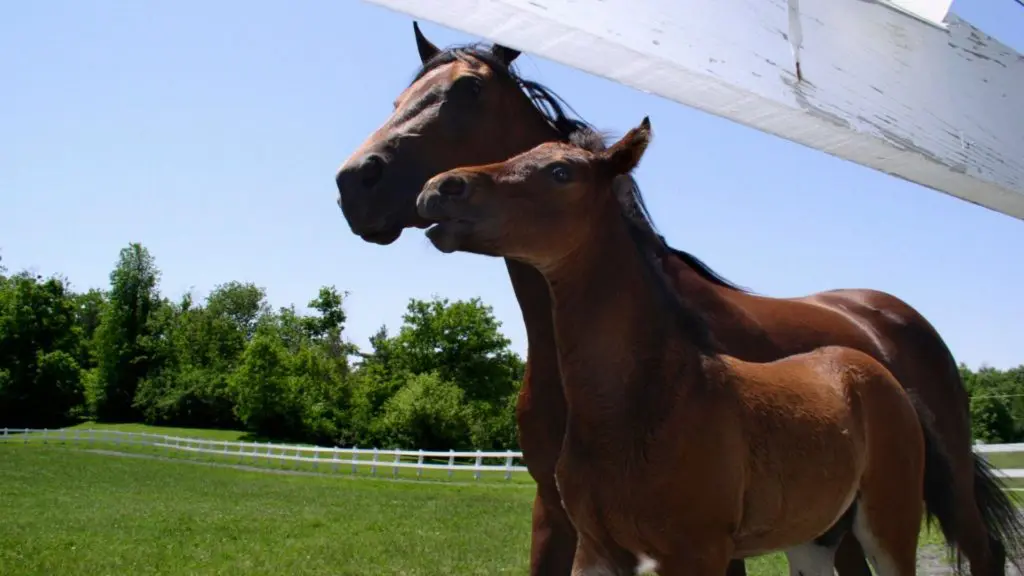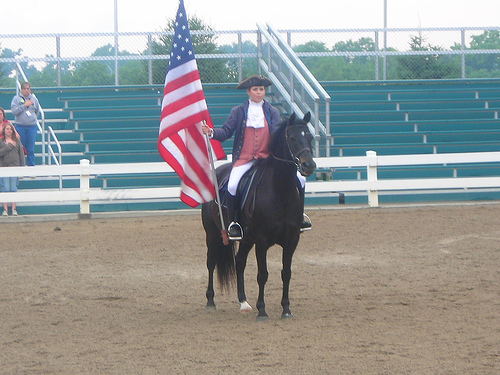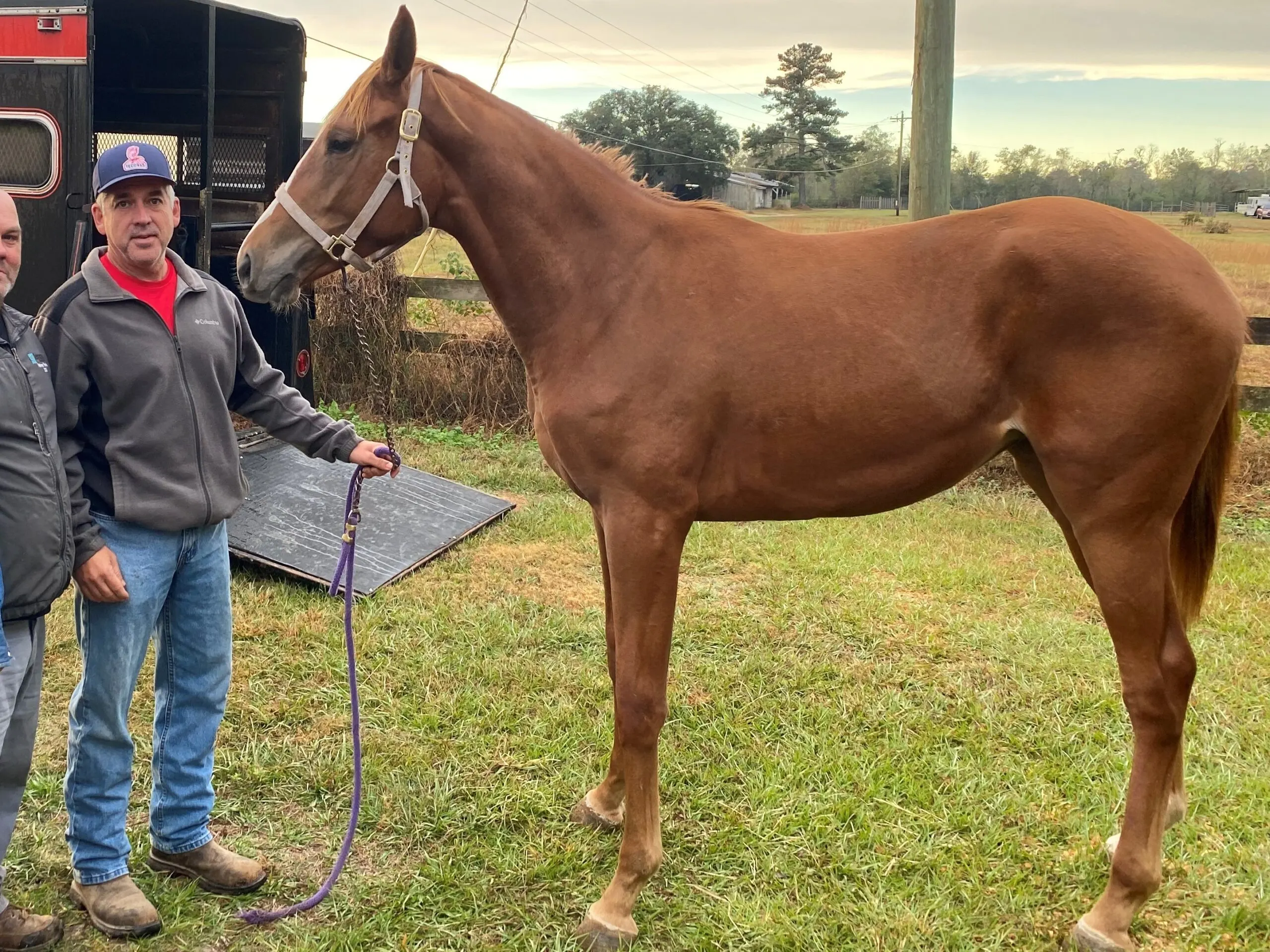Last updated: April 11, 2024
Have you ever wondered about the horse that started it all for the Morgan breed? Meet Figure, whose remarkable traits set the standard for an entire lineage. This single horse’s legacy sparked a breed known for its strength, versatility, and distinctive character.
As a dedicated horse owner and the author of two books on equine topics, my journey with horses has given me a unique perspective on breeds like the Morgan. Originating in the late 18th century, Morgans have influenced other horse breeds and become a symbol of American history and culture.
In this article, I aim to delve into the rich history and characteristics of the Morgan horse breed, drawing from my extensive experience and passion for these magnificent animals. Join me in exploring the fascinating story of the Morgan horse, from Figure’s foundational legacy to the breed’s contemporary significance.

Historical Origins of the Morgan Horse Breed
The Beginnings of a Legacy The Morgan Horse’s story is a journey back in time, beginning with a man named Justin Morgan in the late 1700s. It’s a tale that starts with a small bay colt, a debt payment that turned into a breed-defining legacy.
Figure: The Colt That Started It All
- Unmatched Qualities: Known initially as Figure, this colt, later dubbed “Justin Morgan’s horse,” was extraordinary. Despite his size, he possessed unparalleled strength, endurance, and spirit.
- Legendary Feats: Tales of Figure outperforming larger horses in stamina and strength are a testament to his remarkable capabilities.
Charisma and Lineage
- More Than Strength: Figure wasn’t just about power; he had a captivating blend of grace and vitality.
- Founding a Breed: His traits were passed down to his offspring, creating a lineage that would become the Morgan breed.
From Vermont Fields to Worldwide Recognition
- Roles and Adaptability: The breed expanded from Vermont across the United States, taking on roles as warhorses, workhorses, and show horses.
- Global Fame: The Morgan horse’s versatility and fame reached international shores, showcasing their adaptability in various terrains.
A Living Legacy The Morgan Horse’s evolution from a single stallion to a globally recognized breed is a story of resilience and adaptability. More than just a breed, the Morgan Horse is a legacy that echoes the spirit and heart of Justin Morgan’s horse.

Characteristics of the Morgan Horse
Unveiling the Distinctiveness of Morgans Embarking on our journey with the Morgan Horse, it’s crucial to delve into what sets them apart. They’re not just horses; they are Morgans, with a distinct look, feel, and presence that we’ll explore in this section.
Height and Weight
- Average Height: Morgan horses most commonly measure between 14.1 and 15.2 hands, with some reaching up to 16 hands.
- Weight: Averaging between 900 and 1,100 pounds, Morgans are notably heavy for their height.
Colors and Markings
- Diverse Palette: Morgans come in various colors, including bay, black, chestnut, palomino, and gray. Less common colors like roan, pinto, and dun also appear in the breed.
- Unique Markings: Some Morgans may have white markings on their face and legs. The extent and pattern of these markings can vary, adding to each horse’s unique appearance.

Conformation
- Strong yet Elegant, Morgans boast a compact build, well-arched neck, deep chest, and short back, blending might with grace.
- Strong and Expressive: Their straight, sturdy legs signal strength, while their expressive eyes and chiseled faces reflect intelligence and gentleness.
Health Traits and Longevity
- Renowned Health: Morgans are celebrated for their hardiness and can live into their 30s with proper care.
- Health Considerations: While generally healthy, they can be predisposed to conditions like Equine Metabolic Syndrome.
Unique Features
- Physical Appeal: Morgans have thick, wavy manes and tails, contributing to a regal appearance.
- Temperament: Known for their spirited yet gentle nature, Morgans are eager to please, adaptable, and excel in various disciplines.
The Essence of a Morgan Horse A Morgan horse is defined by a combination of history, physical attributes, health traits, and unique features, which make it the cherished breed it is today.

The Morgan Horse Breed’s Temperament and Behavior
The Heart of the Morgan Horse The vibrant history and unique characteristics of the Morgan Horse are just the beginning. For many enthusiasts and equestrians, their temperament and behavior truly captivates.
Typical Temperament Traits
- Spirited yet Gentle: Morgans are known for their lively spirit and gentle disposition.
- Alert and Calm: They exhibit an innate eagerness and curiosity, being attentive yet calm in their demeanor.
- Enthusiastic and Trustworthy: Their spirited nature is more about enthusiasm and vitality, making them energetic yet reliable companions.
Social Behavior with Others
- Balanced Herd Dynamics: Morgans can be both leaders and congenial members in a herd, bonding well with other horses.
- Affectionate with Humans: Their friendly nature makes them form deep, loyal bonds with handlers and riders, ideal for all levels of equestrians.
Trainability and Adaptability
- Highly Trainable: Known for their intelligence and eagerness to please, Morgans learn new skills quickly.
- Versatile Across Disciplines: Excelling in dressage, show jumping, endurance riding, and carriage driving, they showcase remarkable adaptability.
- Transitioning with Ease: They can easily switch from high-energy tasks to leisurely activities, demonstrating their versatility.

Uses and Activities of the Morgan Horse
The Versatile Morgan: A Historical and Modern Marvel The Morgan Horse, with its rich history and adaptable nature, has been a versatile and valuable breed both historically and in contemporary times. Let’s explore the various roles Morgans have played and continue to play in equestrian sports and activities.
Common Disciplines and Sports They Excel In
- Dressage: Morgans excel in dressage with their smooth gaits and responsive nature, elegantly executing complex maneuvers.
- Endurance Riding: Their stamina and hardiness make them top performers in endurance riding, covering long distances effortlessly.
- Show Jumping: Although less common in this discipline, their agility and power enable Morgans to succeed in show jumping events.
- Driving: Morgans have a rich history in competitive and leisurely carriage rides, showcasing their strength and steady nature.
- Western Riding: Demonstrating adaptability, Morgans participate in rodeos and western events, excelling in disciplines like barrel racing and reining.
Below is a YouTube video showcasing the versatility of Morgan horses.
Famous Morgan Horses
- Figure (Justin Morgan’s Horse): The foundation sire, known for his exceptional abilities in various tasks.
- Black Hawk: Born in 1833, he was famous for his speed and influence in shaping the Morgan breed and others.
- Sherman Morgan: Known for his refined appearance and significant contribution to the breed’s traits.
Historical Roles
- Early Utility: Due to their strength and endurance, Morgans were historically used for farm work, transportation, and even cavalry horses.
- Cavalry Mounts in the Civil War: Morgan horses were crucial in the Civil War, valued for their hardiness and dependability.
- Harness Racing: In the 1800s, Morgans dominated harness racing in New England and were even exported for races in England.
Morgans in Modern Times
- Today, the Morgan Horse continues to showcase its versatility, participating in a wide range of equestrian activities and being cherished for its unique combination of strength, agility, and temperament.

Care and Management: Morgan Horse Breed
While Morgans are generally hardy and adaptable, they flourish with dedicated care. Their dietary, exercise, and health needs aren’t vastly different from other breeds, but understanding and catering to their specific requirements ensures they remain the vibrant, spirited horses we cherish.
Daily Care Routine
- Feeding: Provide your Morgan with a balanced diet of quality hay or pasture, grains, and essential minerals and vitamins. Monitor their weight closely and adjust their diet as needed to prevent obesity.
- Grooming: Regular grooming keeps your Morgan’s coat healthy and promotes bonding. It’s also an excellent time to check for any signs of injuries or skin issues.
- Exercise: Morgans are active horses, so ensure they get daily exercise, including riding, groundwork, or turnout in a pasture.
- Social Interaction: Morgans are social animals. Spend time with them regularly to build trust and strengthen your relationship.
Health Considerations
- Routine Vet Checks: Regular veterinary visits are crucial for maintaining your Morgan’s health. They can help detect and address any potential health issues early on.
- Dental Care: Annual dental check-ups are essential to ensure your horse can eat properly and avoid dental problems.
- Hoof Care: Regular visits from a farrier are necessary to maintain proper hoof health.
Expert Tips
Here are some tips from veterinarians and equine experts to help you provide the best care for your Morgan:
- Dietary Balance: Consult with a veterinarian or equine nutritionist to create a well-balanced diet tailored to your Morgan’s needs, considering factors like age, activity level, and any health concerns.
- Exercise Variety: Incorporate various exercises into your Morgan’s routine to keep them mentally engaged and physically fit. Training sessions and challenging activities can prevent boredom.
- Social Interaction: Morgans are social animals, so ensure they have opportunities to interact with other horses. This can be beneficial for their mental well-being.
Remember that each Morgan horse is unique, so adapt their care plan to suit their individual needs. Your Morgan will thrive with proper care and attention, forging a lasting bond with you as a cherished companion.

Breeding and Genetics of the Morgan Horse
Breeding practices and understanding the genetic traits of the Morgan horse are crucial to maintaining the breed’s excellence. Due to their unique attributes, Morgans have played a significant role in developing other horse breeds.
Breeding Practices
Breeding Morgans involves careful selection of parent horses to maintain and enhance the breed’s distinctive characteristics. Breeders look for specific traits, including conformation, temperament, and performance ability, to ensure the offspring embody the quintessential Morgan qualities.
Genetic Traits and Hereditary Conditions
Morgan horses are known for passing down several genetic traits to their offspring:
- Versatility: Morgans are versatile horses, excelling in various disciplines. This adaptability is often hereditary, making them suitable for various equestrian activities.
- Strength and Hardiness: The breed’s hardiness and strong constitution are hereditary, contributing to their excellent health and longevity.
- Temperament: The spirited yet gentle temperament of Morgans is often inherited. They pass down their eager-to-please nature and intelligence to their progeny.
- Physical Characteristics: Specific physical traits, such as their compact build, arched neck, and expressive eyes, are commonly passed from parent to offspring.
While Morgans are generally healthy, like all breeds, they can be predisposed to certain hereditary conditions. Responsible breeders prioritize genetic testing and screening to minimize the risk of passing on undesirable traits or conditions.
Role in the Development of Other Horse Breeds
The Morgan horse has profoundly impacted the development of other horse breeds. Their exceptional qualities, including endurance, strength, and intelligence, have influenced the creation of various new breeds. Some notable examples include:
- American Saddlebred: The American Saddlebred, known for its elegant gait and show ring presence, has Morgan ancestry in its lineage.
- Standardbred: Morgans played a role in developing the Standardbred breed, known for its speed in harness racing.
- Quarter Horse: The Quarter Horse, renowned for its versatility in Western riding, also has Morgan bloodlines contributing to its foundation.
- Tennessee Walking Horse: The Tennessee Walking Horse, famous for its smooth gaits, has Morgan ancestry, which influences its natural gait.
The Morgan horse’s genetic legacy extends beyond its breed, leaving an indelible mark on the equine world. The breed’s continued breeding practices and genetic preservation ensure that future generations of Morgans will continue to possess their exceptional qualities and influence the development of other horse breeds.

FAQs
What is the Morgan horse known for?
Morgan horses are known for their superb temperament, athletic ability, and versatility. They have enough athleticism to compete in a broad spectrum of equine events and can be used as a family horse due to the breed’s calm and pleasant disposition.
What breeds make up the Morgan Horse?
The Morgan horse breed’s ancestry remains a mystery. While attempts to pinpoint their exact heritage have been inconclusive, it’s believed that their ancestors encompass Arabian, Thoroughbred, Welsh Cobs, and possibly Friesian horses.
What is unique about the Morgan Horse Breed?
The Morgan Horse Breed stands out for its intelligence, strong build, and versatility, excelling in various disciplines.
What are common colors of Morgan Horses?
Common Morgan horse coat colors include bay, black, and chestnut, with distinctive mane and tail characteristics.
How long do Morgan Horses typically live?
With proper care, Morgan Horses can live into their 30s, reflecting their hardiness and resilience.
Can Morgan Horses be used for beginner riders?
Yes, their gentle nature and eagerness to please make the Morgan horse an ideal breed for beginners and therapeutic riding.
What roles have Morgan Horses played historically?
Historically, Morgans served as warhorses, workhorses, and show horses, known for their adaptability and strength.
Conclusion
In our exploration of Morgan horses, we’ve uncovered their remarkable history, distinctive traits, and contributions to the equestrian world. Here’s a concise recap:
- The Morgan breed’s roots lie in Figure, a stallion known for strength and character.
- Morgans hold a unique place in American history and culture.
- Their compact build and expressive eyes set them apart physically.
- Their spirited yet gentle temperament endears them to equestrians.
- Morgans are fast and excel in diverse disciplines, from dressage to driving.
- They’ve influenced breeds like the American Saddlebred and Quarter Horse.
Preserving the Morgan horse’s legacy hinges on responsible breeding and care. Genetic testing, veterinary attention, and proper nutrition are key. Share your stories and questions to continue celebrating these magnificent horses and ensure their enduring charm lives on.
References:
- “Morgan Horse.” American Morgan Horse Association, www.morganhorse.com.
- “Morgan Horse History.” The Lippitt Club, www.lippittclub.org/
- Lynghaug, Fran. “The Official Horse Breeds Standards Guide: The Complete Guide to the Standards of All North American Equine Breed Associations.” Voyageur Press, 2009.
- “The American Morgan Horse.” The Livestock Conservancy
Additional Resources:
These resources offer valuable information, insights, and opportunities to engage with the Morgan horse community. Whether you’re a long-time enthusiast or just beginning your journey with Morgans, these references and additional resources can provide a wealth of knowledge and connections to fellow admirers of this exceptional breed.
Meet Miles Henry
An avid equestrian and seasoned racehorse owner, Miles Henry brings his extensive experience to the equine world, proudly associating with the AQHA, The Jockey Club, and various other equine organizations. Beyond the racetrack, Miles is an accomplished author, having published various books about horses, and is a recognized authority in the field, with his work cited in multiple publications.
🔗 Connect with Miles:
Twitter
Facebook
YouTube: Check out race highlights, horse care tips, and more!

